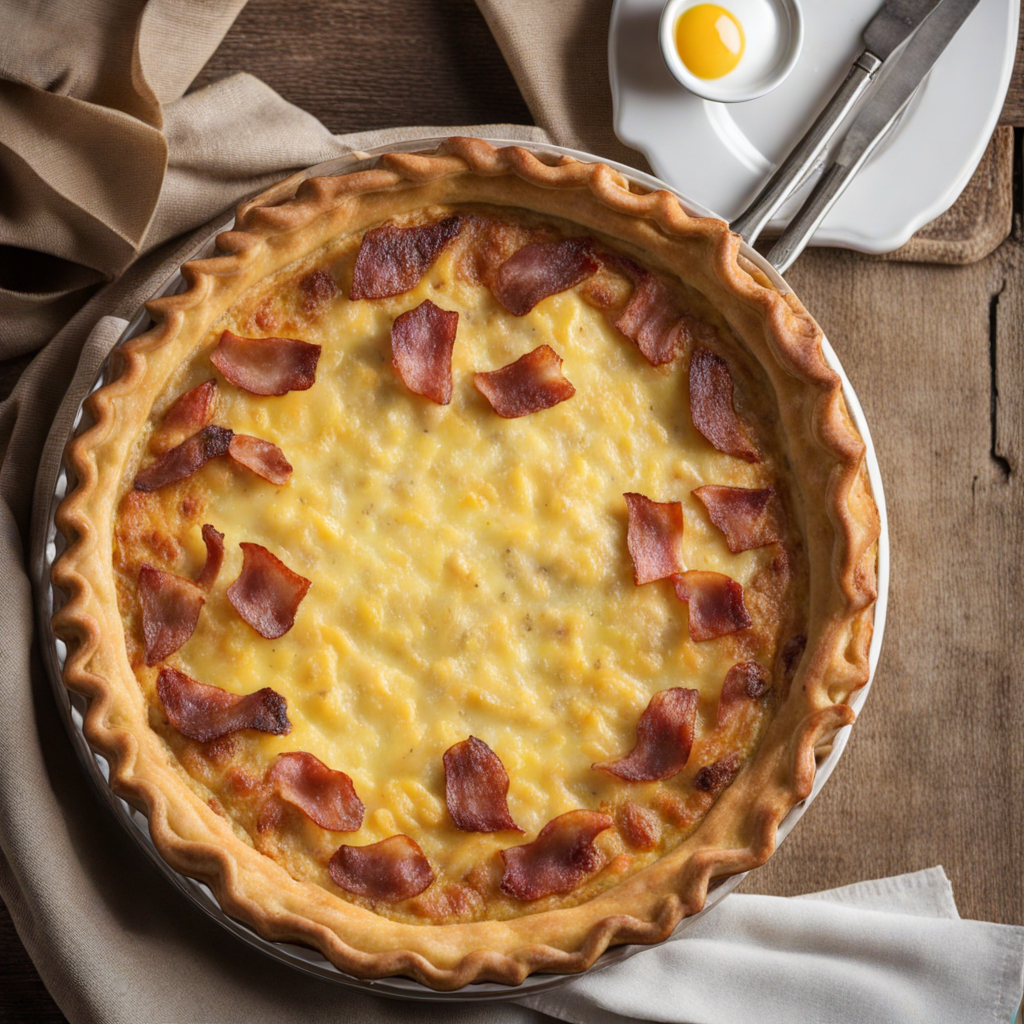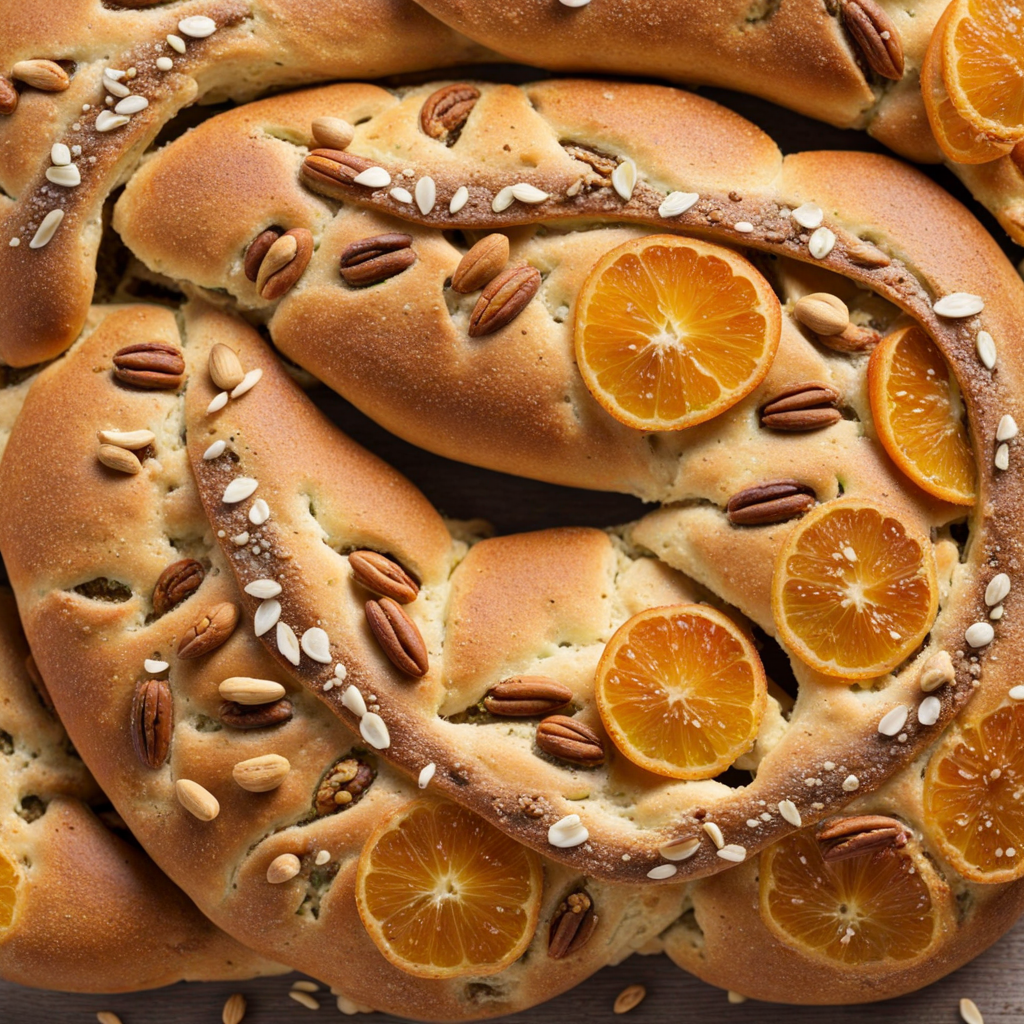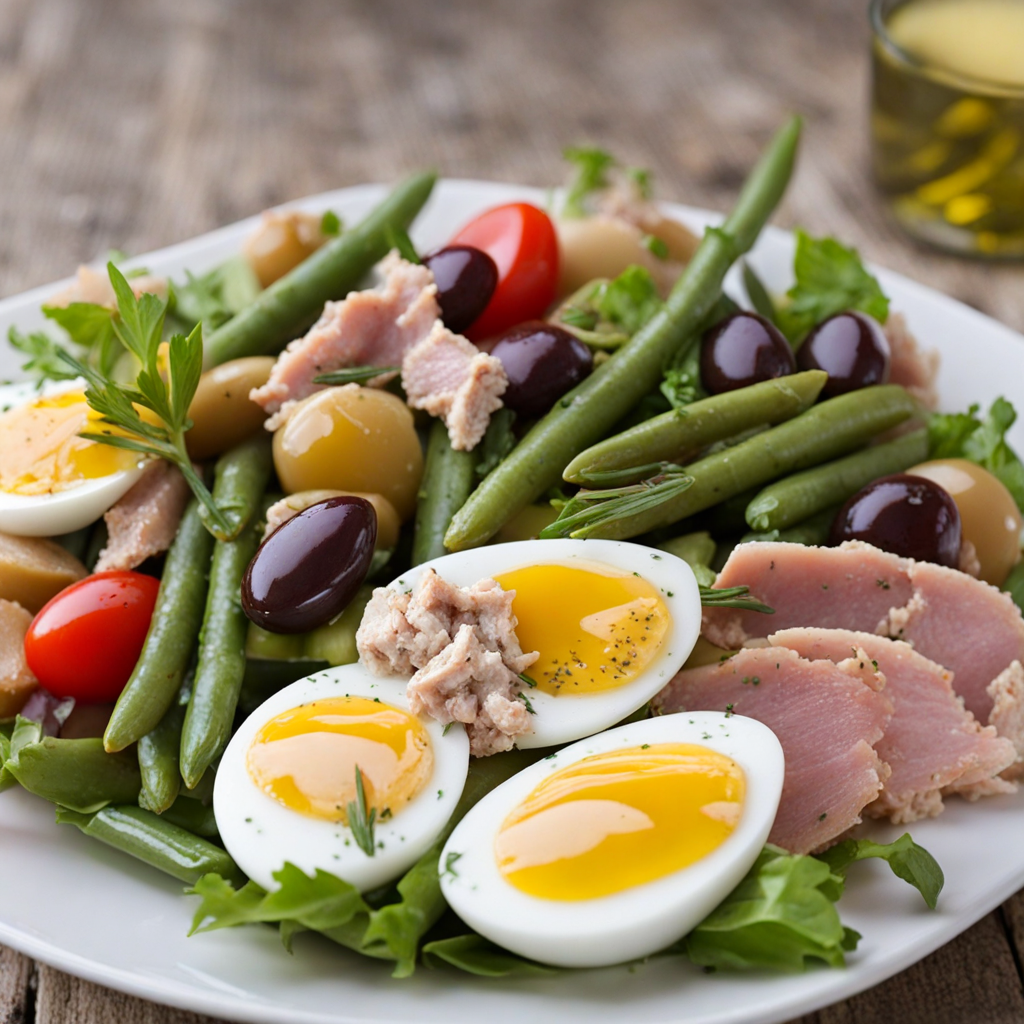Quiche Lorraine
Quiche Lorraine is a delectable dish that hails from the picturesque region of Monaco, known for its luxurious lifestyle and rich culinary traditions. This savory tart is a perfect blend of a buttery, flaky pastry crust filled with a creamy mixture of eggs, heavy cream, and Gruyère cheese. The combination of these ingredients creates a luscious custard-like filling that is both rich and satisfying, making it an ideal comfort food. Traditionally, the quiche is adorned with crispy lardons, which infuse the dish with a smoky, savory flavor that elevates the overall taste experience.
How It Became This Dish
The Delightful History of Quiche Lorraine: A Culinary Journey through Time Quiche Lorraine is one of the most celebrated dishes in French cuisine, renowned for its rich, creamy filling and buttery crust. Although it is often associated with the broader culinary tradition of France, its roots can be traced back to the region of Lorraine, which straddles the border between France and Germany. This savory tart has evolved over centuries, reflecting the region's diverse cultural influences and the changing tastes of society. Origins The history of Quiche Lorraine can be traced back to the medieval period in the region of Lorraine, where it is believed that the dish was first created. The word "quiche" itself is derived from the German word "kuchen," meaning cake. Originally, the dish was a simple bread dough base filled with a mixture of eggs, cream, and lard. The earliest versions of quiche were not the creamy custard we recognize today, but rather a meat pie, indicative of the era's cooking practices. The term "Quiche Lorraine" specifically refers to a variety of quiche that includes lardons, or small strips of bacon. The use of bacon in this dish is thought to reflect the culinary traditions of Lorraine, where pork was a staple meat due to the region's agricultural practices. The combination of eggs, cream, and bacon created a hearty and satisfying meal, suitable for the working classes of medieval Lorraine. Cultural Significance Quiche Lorraine is more than just a dish; it embodies the cultural tapestry of Lorraine. The region has a rich history of conflict and change, having been contested by both French and German powers throughout the centuries. This tumultuous past is mirrored in the cuisine, which showcases a blend of French and German culinary techniques and ingredients. As the region evolved, so did the quiche. By the late 18th century, Quiche Lorraine began to gain popularity beyond its local origins. The dish was embraced by the French aristocracy, who appreciated its rich flavors and elegant presentation. It soon became a staple at lavish banquets and gatherings, symbolizing sophistication and culinary refinement. The dish’s association with the upper class contributed to its evolution. The crust became flakier and more refined, and the filling transformed into the custard-like mixture we are familiar with today, made with eggs and cream. This shift marked the transition of Quiche Lorraine from a rustic peasant dish to a gourmet offering, showcasing the adaptability and resilience of Lorraine's culinary heritage. Development Over Time In the 19th century, Quiche Lorraine began to spread beyond the confines of Lorraine and France. The dish made its way to other parts of Europe, particularly through the influence of French cuisine during the 19th-century culinary revolution. As French chefs refined their techniques and shared their traditions, Quiche Lorraine became a popular dish in restaurants and cafes across Europe. The early 20th century saw the rise of Quiche Lorraine in the United States, particularly during the post-World War II era. As American soldiers returned from Europe, they brought with them a taste for European cuisine. The quiche, with its elegant presentation and delightful flavors, became a symbol of the newfound culinary sophistication that was emerging in American homes. It was during this period that quiches of all varieties began to appear at brunches, picnics, and dinner parties, reflecting the era's emphasis on entertaining and gourmet cooking. The 1970s and 1980s marked the peak of quiche's popularity in the United States. It became a staple of the "New American Cuisine," characterized by fresh ingredients and a focus on presentation. Cookbooks and cooking shows began to feature Quiche Lorraine prominently, with variations that included vegetables, cheeses, and herbs. The dish became emblematic of a more casual yet sophisticated dining experience, appealing to a wide audience. Modern Interpretations Today, Quiche Lorraine has undergone further transformations, as chefs and home cooks alike experiment with the traditional recipe. While the classic version remains beloved, modern interpretations often include a variety of ingredients. Some incorporate spinach, mushrooms, or even seafood, while others experiment with different cheeses, such as Gruyère or goat cheese. The crust, too, has seen innovation, with gluten-free and whole grain alternatives becoming increasingly popular. The dish has also retained its cultural significance, serving as a bridge between the rustic roots of Lorraine and the more refined practices of modern cuisine. Quiche Lorraine is often featured in culinary festivals and events that celebrate regional French cuisine, highlighting its enduring legacy. Moreover, the globalized world of cuisine has allowed Quiche Lorraine to transcend its origins. It is now enjoyed in homes and restaurants around the globe, often serving as a symbol of comfort, elegance, and culinary heritage. Whether served at a brunch gathering, a formal dinner, or as a delightful lunch option, Quiche Lorraine continues to captivate palates and inspire creativity in the kitchen. Conclusion The journey of Quiche Lorraine from its humble beginnings in medieval Lorraine to its status as a beloved dish in contemporary cuisine encapsulates the rich tapestry of culinary history. This savory tart not only showcases the flavors of its region but also reflects the broader cultural shifts and exchanges that have shaped the world of food. Its evolution from a rustic pie to a gourmet offering illustrates the adaptability of culinary traditions and the enduring appeal of comfort food. As we enjoy a slice of Quiche Lorraine today, we partake in a tradition that spans centuries, celebrating the resilience of culinary heritage and the joy of sharing good food with loved ones. Whether served with a crisp salad, a glass of white wine, or simply enjoyed on its own, Quiche Lorraine remains a timeless dish that continues to delight and inspire, a true testament to the art of good cooking.
You may like
Discover local flavors from Monaco







